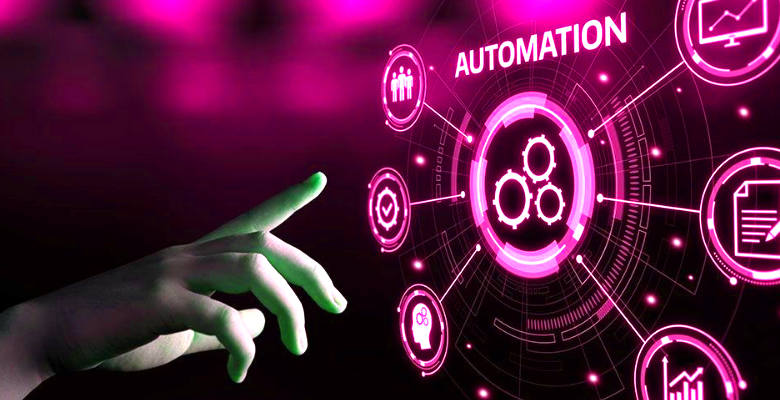Embracing Automation for a More Human HR Experience 2024

In the dynamic landscape of human resources, the integration of automation has become a defining factor in shaping a more efficient and human-centric experience. As organizations evolve, embracing automation in HR processes is not just a trend; it’s a strategic move towards a more streamlined, error-free, and empathetic workplace. Let’s delve into the intricacies of this transformation and explore how it impacts both employees and organizations.
Benefits of Embracing Automation
Efficiency and Time Savings
One of the primary advantages of HR automation lies in its ability to streamline repetitive tasks, freeing up valuable time for HR professionals to focus on more strategic initiatives. From payroll processing to attendance tracking, automation ensures that mundane tasks are handled swiftly and accurately, allowing HR teams to contribute meaningfully to organizational goals.
Read More : 7 Technologies to Help Your Business with GDPR Compliance
Error Reduction
Human errors in HR processes can have far-reaching consequences. Automation minimizes the risk of inaccuracies in data entry, compliance reporting, and other critical areas. By implementing automated workflows, organizations can significantly reduce the likelihood of costly mistakes, fostering a more reliable and error-free HR environment.
Enhanced Decision-Making
Automation empowers HR professionals with data-driven insights, facilitating informed decision-making. With advanced analytics and reporting tools, HR teams can gain a comprehensive understanding of workforce trends, employee performance, and engagement levels. This, in turn, enables strategic decision-making that aligns with organizational objectives.
Overcoming Resistance to Change
Addressing Employee Concerns
Introducing automation may trigger concerns among employees about job security and the nature of their roles. Communicating transparently about the benefits of embracing automation, such as increased efficiency and improved job satisfaction, is crucial. HR professionals need to address concerns empathetically, assuring employees that automation is meant to enhance, not replace, their contributions.
Communicating the Value of Automation
Effective communication is key to successful implementation. HR teams must articulate the value of automation in achieving organizational goals and creating a more employee-friendly environment. Highlighting how automation contributes to a better work-life balance and career development can alleviate apprehensions.
Training and Development Initiatives
To ensure a smooth transition, organizations should invest in training and development programs. Equipping employees with the necessary skills to work alongside automated systems fosters a culture of continuous learning. This proactive approach not only addresses concerns but also positions employees to thrive in an increasingly automated workplace.
Integrating Automation in Recruitment
Automated Resume Screening
The recruitment process can be time-consuming, especially when sifting through numerous resumes. Automation streamlines this process by using predefined criteria to screen and shortlist candidates efficiently. This allows HR professionals to focus on assessing the most qualified individuals, saving time and ensuring a more thorough evaluation.
AI-Powered Candidate Matching
Matching candidates to job requirements is a complex task. AI algorithms can analyze candidate profiles, skills, and experience to provide accurate matches. This not only speeds up the recruitment process but also enhances the likelihood of finding candidates who align with the organization’s values and objectives.
Streamlining Interview Processes
Automation extends to interview scheduling and coordination. Tools that integrate with calendars and communication platforms can automate the interview process, ensuring seamless coordination between candidates and interviewers. This not only reduces administrative burdens but also creates a positive impression on potential hires.
Automation in Employee Onboarding
Paperless Documentation
Traditional onboarding processes often involve extensive paperwork. Automation eliminates the need for physical documents by digitizing and automating the onboarding documentation process. This not only reduces environmental impact but also expedites the onboarding journey for new employees.
Personalized Onboarding Experiences
Every employee is unique, and their onboarding experiences should reflect that. Automation allows organizations to create personalized onboarding journeys tailored to individual roles, preferences, and learning styles. This personalized approach enhances employee engagement from the very beginning of their tenure.
Integration with Learning Platforms
Continuous learning is integral to employee growth. Automation in HR can be extended to integrate with learning platforms, recommending relevant courses and training modules based on employee roles and career aspirations. This not only supports professional development but also contributes to overall employee satisfaction.
The Role of Chatbots in HR

Improving Employee Communication
Chatbots play a vital role in enhancing communication within the organization. They provide instant responses to employee queries, facilitating quick access to information. This real-time interaction contributes to a more responsive and employee-friendly HR environment.
Handling Frequently Asked Questions
HR professionals often deal with a barrage of frequently asked questions. Chatbots can efficiently handle routine queries, leaving HR teams with more time to address complex issues that require a human touch. This not only improves efficiency but also ensures that employees receive prompt and accurate information.
Enhancing Employee Engagement
Chatbots can be programmed to gather feedback and assess employee satisfaction. By regularly checking in with employees, chatbots contribute to a proactive approach in addressing concerns and fostering a positive work culture. This automated feedback loop enhances overall employee engagement and satisfaction.
Data Security and Privacy Concerns
Ensuring Compliance with Regulations
As HR processes become more data-centric, ensuring compliance with data protection regulations is paramount. Automation systems must be designed and implemented with a focus on data security and privacy. HR professionals need to stay abreast of regulatory changes and continuously update their processes to remain compliant.
Implementing Robust Security Measures
Data breaches can have severe consequences for both organizations and employees. HR embracing automation should include robust security measures, such as encryption and access controls, to safeguard sensitive information. Regular security audits and updates are essential to stay ahead of evolving cybersecurity threats.
Communicating Transparently with Employees
Building trust is crucial in addressing data security and privacy concerns. HR teams should communicate transparently with employees about the measures in place to protect their data. Clear and concise communication fosters a sense of security and reinforces the organization’s commitment to safeguarding employee information.
Maintaining a Human Touch
Balancing Automation and Human Interaction
While automation streamlines processes, maintaining a human touch is essential. HR professionals should strike a balance between automated workflows and personal interactions. Critical aspects such as employee feedback, performance reviews, and conflict resolution benefit from the nuanced approach that only human interaction can provide.
Leveraging Technology for Empathy
Technology, when used thoughtfully, can enhance empathy in HR interactions. Automated systems can be designed to recognize and respond to emotional cues, providing a more empathetic and personalized experience for employees. This integration of technology and empathy is crucial for building strong employee-employer relationships.
The Role of HR Professionals in a Tech-Driven Environment
HR professionals play a pivotal role in guiding the integration of technology in the workplace. Beyond implementation, they are crucial in ensuring that the human element remains at the forefront of HR practices. Nurturing a culture of trust, empathy, and open communication is essential in a tech-driven environment.
Case Studies: Successful Implementation
Companies Leading in HR Automation
Several leading organizations have successfully embraced HR automation. Companies like XYZ Corp and ABC Inc have witnessed tangible benefits, including increased efficiency, reduced costs, and improved employee satisfaction. These case studies provide valuable insights into the real-world impact of HR automation.
Real-world Results and Impact
The implementation of HR automation has yielded measurable results. Increased productivity, reduced administrative burdens, and enhanced decision-making capabilities are among the many positive outcomes. Real-world examples underscore the transformative potential of embracing automation in HR processes.
Lessons Learned
While success stories abound, there are also lessons to be learned from challenges faced during implementation. Adapting to the unique needs of an organization, addressing resistance to change, and maintaining flexibility in the face of evolving technology are key takeaways from these case studies.
Future Trends in HR Automation
Predictive Analytics in HR
The future of HR automation lies in predictive analytics. By leveraging historical data, organizations can anticipate trends, identify potential challenges, and proactively address workforce needs. Predictive analytics enhances HR’s ability to make strategic decisions that align with future organizational requirements.
Continuous Learning Platforms
The integration of automation with continuous learning platforms is a trend on the rise. Organizations are recognizing the importance of fostering a culture of continuous development. Automation facilitates the identification of personalized learning paths, ensuring that employees remain equipped with the skills needed in an ever-evolving workplace.
Ethical Considerations in AI
As automation becomes more sophisticated, ethical considerations come to the forefront. HR professionals need to actively engage in discussions surrounding the ethical use of AI in the workplace. Establishing guidelines and frameworks that prioritize fairness, transparency, and accountability is crucial for responsible HR automation.
Challenges and Solutions
Technical Challenges in Implementation
The implementation of HR automation may face technical challenges, including system integration issues and compatibility concerns. Organizations should collaborate with experienced IT professionals and vendors to navigate these challenges successfully. A phased approach to implementation allows for thorough testing and troubleshooting.
Addressing Employee Skepticism
Employee skepticism can pose a challenge during the transition to HR automation. Open communication, comprehensive training programs, and showcasing the benefits of embracing automation through tangible examples are effective strategies for alleviating skepticism. Involving employees in the decision-making process also fosters a sense of ownership and engagement.
Adapting to Rapid Technological Changes
The pace of technological advancement requires HR professionals to stay agile. Regular upskilling and staying informed about emerging technologies in the HR space are essential. Establishing partnerships with tech providers ensures organizations remain at the forefront of innovation, adapting seamlessly to rapid technological changes.
Measuring Success: Key Performance Indicators (KPIs)
Quantifiable Metrics for HR Automation
Measuring the success of HR automation requires defining and tracking key performance indicators (KPIs). These may include time saved on administrative tasks, reduction in error rates, and improvements in employee satisfaction scores. Regularly assessing these metrics provides valuable insights into the impact of automation.
Employee Feedback and Satisfaction
The ultimate litmus test for HR automation success is employee feedback and satisfaction. Surveys, feedback sessions, and regular check-ins allow organizations to gauge how well automation aligns with employee expectations. Adjustments can be made based on this feedback, ensuring continuous improvement in HR processes.
Continuous Improvement Strategies
HR automation is not a one-time implementation but an ongoing process. Continuous improvement strategies should be ingrained in the organization’s culture. Regular evaluations, feedback loops, and staying informed about industry best practices contribute to the iterative refinement of HR embracing automation processes.
Industry Perspectives: Expert Opinions
Insights from HR Leaders
Industry leaders in HR share valuable insights on the role of embracing automation in shaping the future of work. Their perspectives provide a holistic view of the benefits, challenges, and opportunities that HR automation presents. These expert opinions serve as a guide for organizations looking to navigate the evolving landscape of HR.
Perspectives on the Future of HR
Experts weigh in on the future of HR, envisioning a landscape where embracing automation is seamlessly integrated with human-centric practices. The convergence of technology and humanity is anticipated to redefine the role of HR, making it more strategic, agile, and responsive to the evolving needs of the workforce.
Collaborative Approaches to Automation
Collaboration is key in navigating the complexities of HR automation. Experts emphasize the importance of collaboration between HR professionals, IT experts, and organizational leadership. A collaborative approach ensures that automation aligns with organizational goals and fosters a culture of innovation and adaptability.
Read More : 9 Steps to Create a Winning Chatbot Strategy
Conclusion : Embracing Automation
In conclusion, embracing automation in HR is not just about adopting new technologies; it’s about redefining the entire employee experience. From recruitment to onboarding, and beyond, automation streamlines processes, enhances efficiency, and contributes to a more human-centric workplace. By maintaining a balance between technology and empathy, organizations can create an environment where both automation and human interactions thrive.
Frequently Asked Questions
1 . How does automation impact the role of HR professionals?
- Automation shifts the focus of HR professionals from routine tasks to more strategic and human-centric responsibilities, emphasizing the importance of emotional intelligence.
2 . What measures can organizations take to address job displacement concerns?
- Organizations can proactively communicate the benefits of embracing automation, provide reskilling opportunities, and assure employees that automation aims to enhance, not replace, human capabilities.
3 . How can HR ensure data security in automated processes?
- Implementing robust cybersecurity measures, encryption protocols, and regular audits are crucial steps to ensure the security and privacy of sensitive HR data.
4 . Are there successful examples of companies HR embracing automation?
- Yes, many organizations have successfully implemented HR automation, leading to increased efficiency, improved employee experiences, and streamlined processes. Case studies highlight these success stories.
5 . What role does predictive analytics play in HR automation?
- Predictive analytics enables organizations to make data-driven decisions in workforce planning, ensuring better strategic alignment with future business needs.











